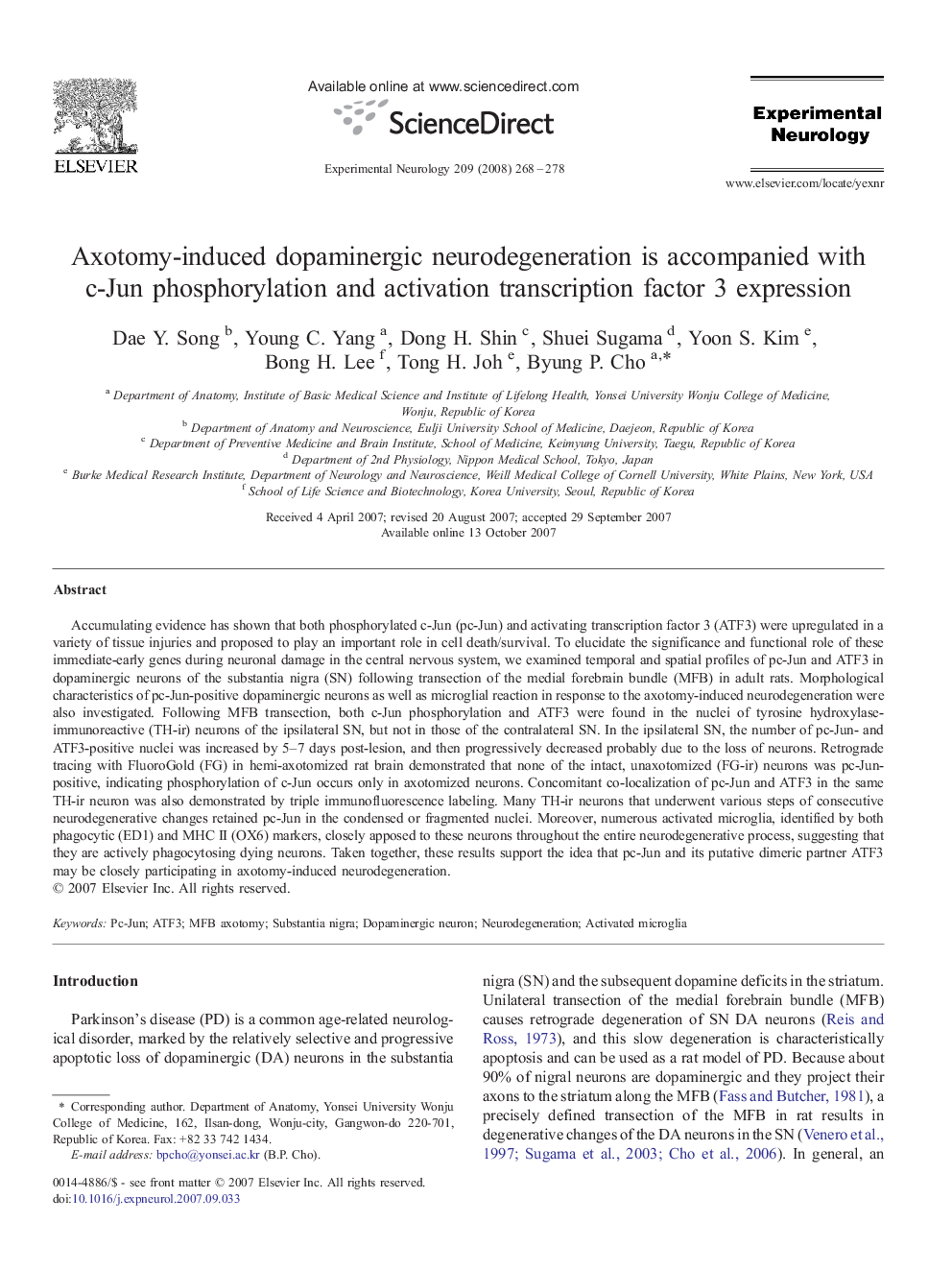| کد مقاله | کد نشریه | سال انتشار | مقاله انگلیسی | نسخه تمام متن |
|---|---|---|---|---|
| 6019547 | 1186582 | 2008 | 11 صفحه PDF | دانلود رایگان |
عنوان انگلیسی مقاله ISI
Axotomy-induced dopaminergic neurodegeneration is accompanied with c-Jun phosphorylation and activation transcription factor 3 expression
دانلود مقاله + سفارش ترجمه
دانلود مقاله ISI انگلیسی
رایگان برای ایرانیان
کلمات کلیدی
موضوعات مرتبط
علوم زیستی و بیوفناوری
علم عصب شناسی
عصب شناسی
پیش نمایش صفحه اول مقاله

چکیده انگلیسی
Accumulating evidence has shown that both phosphorylated c-Jun (pc-Jun) and activating transcription factor 3 (ATF3) were upregulated in a variety of tissue injuries and proposed to play an important role in cell death/survival. To elucidate the significance and functional role of these immediate-early genes during neuronal damage in the central nervous system, we examined temporal and spatial profiles of pc-Jun and ATF3 in dopaminergic neurons of the substantia nigra (SN) following transection of the medial forebrain bundle (MFB) in adult rats. Morphological characteristics of pc-Jun-positive dopaminergic neurons as well as microglial reaction in response to the axotomy-induced neurodegeneration were also investigated. Following MFB transection, both c-Jun phosphorylation and ATF3 were found in the nuclei of tyrosine hydroxylase-immunoreactive (TH-ir) neurons of the ipsilateral SN, but not in those of the contralateral SN. In the ipsilateral SN, the number of pc-Jun- and ATF3-positive nuclei was increased by 5-7Â days post-lesion, and then progressively decreased probably due to the loss of neurons. Retrograde tracing with FluoroGold (FG) in hemi-axotomized rat brain demonstrated that none of the intact, unaxotomized (FG-ir) neurons was pc-Jun-positive, indicating phosphorylation of c-Jun occurs only in axotomized neurons. Concomitant co-localization of pc-Jun and ATF3 in the same TH-ir neuron was also demonstrated by triple immunofluorescence labeling. Many TH-ir neurons that underwent various steps of consecutive neurodegenerative changes retained pc-Jun in the condensed or fragmented nuclei. Moreover, numerous activated microglia, identified by both phagocytic (ED1) and MHC II (OX6) markers, closely apposed to these neurons throughout the entire neurodegenerative process, suggesting that they are actively phagocytosing dying neurons. Taken together, these results support the idea that pc-Jun and its putative dimeric partner ATF3 may be closely participating in axotomy-induced neurodegeneration.
ناشر
Database: Elsevier - ScienceDirect (ساینس دایرکت)
Journal: Experimental Neurology - Volume 209, Issue 1, January 2008, Pages 268-278
Journal: Experimental Neurology - Volume 209, Issue 1, January 2008, Pages 268-278
نویسندگان
Dae Y. Song, Young C. Yang, Dong H. Shin, Shuei Sugama, Yoon S. Kim, Bong H. Lee, Tong H. Joh, Byung P. Cho,